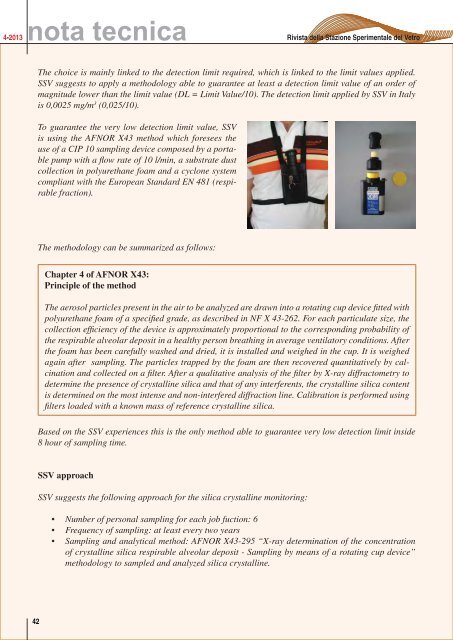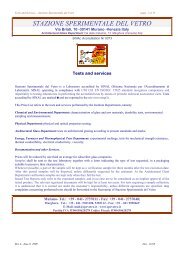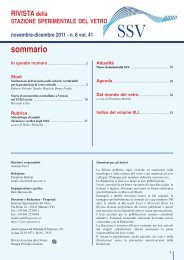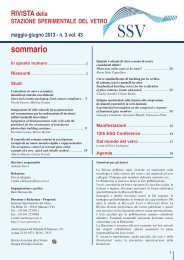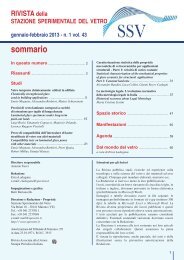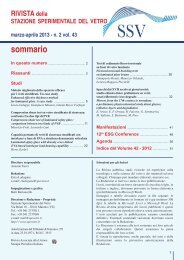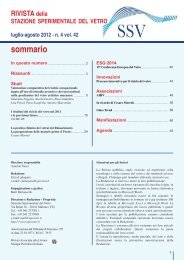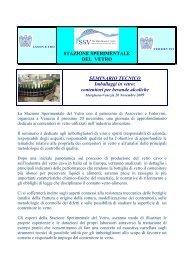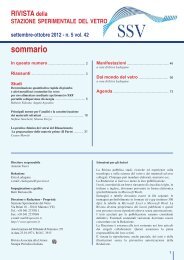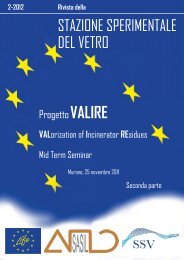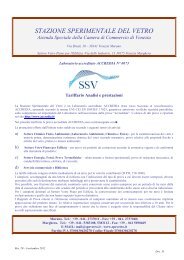RSSV 4 2013.indd - Stazione Sperimentale del Vetro
RSSV 4 2013.indd - Stazione Sperimentale del Vetro
RSSV 4 2013.indd - Stazione Sperimentale del Vetro
Create successful ePaper yourself
Turn your PDF publications into a flip-book with our unique Google optimized e-Paper software.
4-2013<br />
nota tecnica<br />
Rivista <strong>del</strong>la <strong>Stazione</strong> <strong>Sperimentale</strong> <strong>del</strong> <strong>Vetro</strong><br />
The choice is mainly linked to the detection limit required, which is linked to the limit values applied.<br />
SSV suggests to apply a methodology able to guarantee at least a detection limit value of an order of<br />
magnitude lower than the limit value (DL = Limit Value/10). The detection limit applied by SSV in Italy<br />
is 0,0025 mg/m 3 (0,025/10).<br />
To guarantee the very low detection limit value, SSV<br />
is using the AFNOR X43 method which foresees the<br />
use of a CIP 10 sampling device composed by a portable<br />
pump with a fl ow rate of 10 l/min, a substrate dust<br />
collection in polyurethane foam and a cyclone system<br />
compliant with the European Standard EN 481 (respirable<br />
fraction).<br />
The methodology can be summarized as follows:<br />
Chapter 4 of AFNOR X43:<br />
Principle of the method<br />
The aerosol particles present in the air to be analyzed are drawn into a rotating cup device fi tted with<br />
polyurethane foam of a specifi ed grade, as described in NF X 43-262. For each particulate size, the<br />
collection effi ciency of the device is approximately proportional to the corresponding probability of<br />
the respirable alveolar deposit in a healthy person breathing in average ventilatory conditions. After<br />
the foam has been carefully washed and dried, it is installed and weighed in the cup. It is weighed<br />
again after sampling. The particles trapped by the foam are then recovered quantitatively by calcination<br />
and collected on a fi lter. After a qualitative analysis of the fi lter by X-ray diffractometry to<br />
determine the presence of crystalline silica and that of any interferents, the crystalline silica content<br />
is determined on the most intense and non-interfered diffraction line. Calibration is performed using<br />
fi lters loaded with a known mass of reference crystalline silica.<br />
Based on the SSV experiences this is the only method able to guarantee very low detection limit inside<br />
8 hour of sampling time.<br />
SSV approach<br />
SSV suggests the following approach for the silica crystalline monitoring:<br />
• Number of personal sampling for each job fuction: 6<br />
• Frequency of sampling: at least every two years<br />
• Sampling and analytical method: AFNOR X43-295 “X-ray determination of the concentration<br />
of crystalline silica respirable alveolar deposit - Sampling by means of a rotating cup device”<br />
methodology to sampled and analyzed silica crystalline.<br />
42


